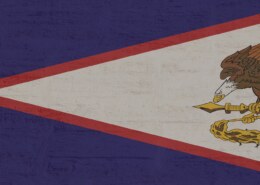What You Need To Know About The People Of American Samoa
Territory Of American Samoa, officially American Samoa, is an unincorporated territory of the United States consisting of the eastern part of the Samoa Archipelago located in the South and Central Pacific Ocean.
It is located about 1600 miles (2600 km) northeast of New Zealand and 2200 miles (3500 km) southwest of the American state of Hawaii.
The Territory, which is part of Polynesia, includes six Samoan islands east of the meridian of 171° west longitude.
Samoa (formerly West Samoa), its closest neighbor and self-governing country, consists of nine Samoan islands to the west of the meridian.
American Samoa includes the inhabited islands of Tutuila, Tau, Olosega, Ofu and Aunuuu, as well as a uninhabited coral atoll called the Rose Atoll.
Swains Island, an inhabited coral atoll located about 280 miles (450 km) northwest of Tutuila and physically separated from the archipelago, was incorporated into American Samoa in 1925.
The capital of American Samoa is Pago Pago, on Tutuila Island.
People Of American Samoa
- American Samoa Landscape
- Swain Islands
The vast majority of the population (over nine tenths) are ethnic Samoans; there are tiny minorities of Tongan and Filipino origin and people of mixed ethnicity.
Samoans are Polynesians, closely associated with the indigenous peoples of New Zealand, French Polynesia, Hawaii and Tonga.
The Samoan way of life, or Samoa’s fa’a, is communal. The main cell of the community organization is the extended family (aiga).
Even after decades of foreign influence, most Samoans are fluent in the Samoan language.
However, most Samoan Americans also speak English.
About half the population belongs to one of several Protestant denominations, among which the congregational Christian Church has the largest number of followers.
More than one sixth of the population is Roman Catholic, and just under one sixth is Mormon.
Pago Pago is the main port and administrative and commercial center.
American Samoa has a large out-of-territorial population: more than two-fifths of the population was born outside the Territory, mostly in Samoa, with a smaller proportion living in the United States, Tonga, various Asian countries, and other Pacific islands.
In addition, many Samoan Americans have migrated to the United States since the mid-20th century, with more Samoans abroad than on the islands.
The population that remains in American Samoa is concentrated in urban areas; only about one eighth of them live in rural areas.
Since the late 20th century, population growth has increased rapidly, mainly due to high fertility and low mortality rates. The population is young, almost a third of them are under 15 years of age, and life expectancy is 74 years.
Topography Of Everything American Samoa
Land
With the exception of coral atolls, the islands of American Samoan have been formed over the past seven million years as a result of volcanic activity; their interiors are high and rugged.
The main island of Tutuila has an area of 52 sq. miles (135 sq. km) and rises steeply above deep entrances.
The most remarkable of these fjords is Pago Pago harbor, which divides the island into almost two parts. The highest point of Tutuila is Matafao peak (2,142 feet [653 meters]).
The group of islands of Manua (Tau, Olosega and Ofu), located about 60 miles (100 km) east of Tutuila, is the second largest island region.
Coral reefs are common at the end points of the islands, especially Tutuila; some of the reefs form the barriers that surround the lagoons.
Climate
The climate of American Samoa is tropical, and there is enough precipitation.
Annually, about 200 inches (5000 mm) fall on Pago Pago. Most streams carry more water in the highlands than near the sea, and do not reach the ocean; on the contrary, they filter into porous basalt rocks.
Consequently, coastal wells provide most of the water supply.
Temperatures are unusually constant; average temperatures range from high 60s to low 90s F (about 21-32 °C). The average air humidity is 80 percent.
Moderate southeastern trade winds prevail, but during the wet season, from November to March, strong storms can occur.
Plant And Animal Life
Rain forests with high fern and trees cover the mountain interiors of the islands.
On the coast are plantations of tarot, coconut and other food crops.
Despite the fact that the islands are not rich in wildlife, some bird species, such as the rare serrated pigeon, are unique.
Wild animals include bats (bat type), lizards, rats, snakes and pigs. The islands are also home to many flying and crawling insects.
Economy
The economy is based on services and production.
The main employer is the state. A large part of national income comes in the form of grants from the U.S. federal government.
Canning of tuna (at American canning factories) and tourism are the main industries.
Agriculture is organized on a semi-commercial basis for production of tarot, bananas, tropical fruits and vegetables.
Traditional family gardens produce coconuts, bread tree and yams.
Production practically meets domestic needs, and the U.S. government has programs to increase production to self-sufficiency levels.
The main sources of imports are the United States and Singapore (which include fish destined for canning factories, consumer goods, food, and mineral fuels), although Fiji and New Zealand are also notable exporters of goods to American Samoa.
The United States is a major export destination, consisting mainly of canned tuna as well as small amounts of pet food.
A major public works program on American Samoa from the 1970s to the ’90s increased the number of miles of paved roads, mostly on the island of Tutuila.
Pago Pago is the only major port. An international airport is located on Tutuila, and smaller airstrips operate on other islands.
Credit:
https://www.britannica.com/place/American-Samoa





Leave an answer
You must login or register to add a new answer.